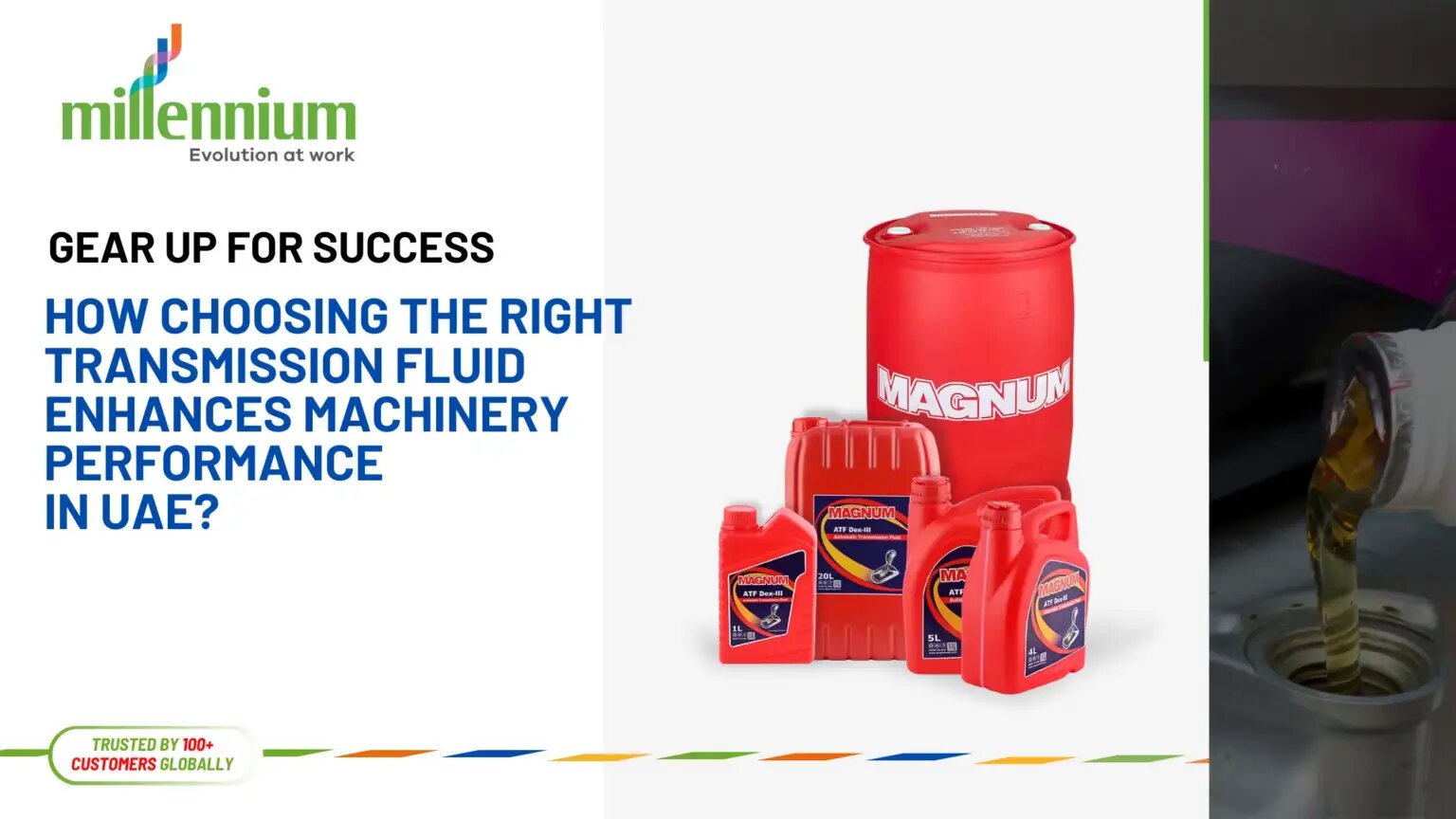In the challenging and diverse operating conditions of the UAE, selecting the appropriate transmission fluid is critical for ensuring the optimal performance and longevity of machinery. From the scorching heat of the deserts to the demands of urban environments, the right transmission fluid can significantly enhance machinery performance, reduce maintenance costs, and extend equipment lifespan.
Understanding Automatic Transmission Fluid
How Choosing the Right Automatic Transmission Fluid – Automatic Transmission Fluid (ATF) is a specialized lubricant designed to meet the unique demands of automatic transmission systems in vehicles and machinery. It serves multiple functions essential for the smooth operation and longevity of the transmission. These functions include lubricating moving parts, cooling the transmission, providing hydraulic pressure, and preventing wear and corrosion. The efficiency of an ATF directly impacts the overall performance, fuel efficiency, and durability of the machinery it serves.
What is Transmission Oil?
Transmission oil, often referred to as transmission fluid, is a type of lubricant used in the transmission systems of vehicles and machinery. Unlike engine oil, which primarily lubricates the engine’s moving parts, transmission oil is responsible for lubricating the gears and bearings within the transmission. It also facilitates the hydraulic functions needed for gear shifting and helps to cool the transmission system by dissipating heat. Transmission oil must possess high thermal stability and resistance to oxidation, especially in the UAE’s harsh climatic conditions.
Types of Automatic Transmission Fluid
There are several types of ATF, each formulated to meet specific requirements of different transmission systems. Understanding these types helps in choosing the right fluid for your machinery:
-
Type F: An older specification developed by Ford, Type F ATF is not as commonly used today but is known for its lack of friction modifiers, making it suitable for certain vintage vehicles.
-
Dexron/Mercon: These are among the most widely used ATF specifications. Dexron (developed by General Motors) and Mercon (developed by Ford) have multiple variants, with Dexron VI and Mercon V being the latest, offering improved thermal stability, friction characteristics, and oxidation resistance.
-
Synthetic ATF: Synthetic fluids are designed for high-performance and extreme conditions. They offer superior thermal stability, oxidation resistance, and fluidity at low temperatures, making them ideal for the UAE’s diverse climate.
-
CVT Fluid: Continuously Variable Transmission (CVT) fluids are specialized ATFs designed for CVT systems, which require unique frictional properties to handle the constant changes in belt or chain position.
-
Dual-Clutch Transmission (DCT) Fluid: This type of ATF is used in dual-clutch transmissions, which need fluids that can handle the specific demands of dual-clutch systems, including high pressure and thermal stability.
How to Choose the Right Automatic Transmission Fluid
Selecting the appropriate ATF for machinery operating in the UAE involves considering several critical factors:
-
Manufacturer Recommendations: Always start with the recommendations provided by the machinery or vehicle manufacturer. These guidelines are based on extensive testing and ensure that the selected fluid will meet the performance and durability requirements of the transmission system.
-
Operating Conditions: The UAE’s extreme heat and dusty environment necessitate the use of ATFs with high thermal stability and excellent anti-wear properties. Fluids that can maintain their viscosity and protect against contamination under harsh conditions are essential.
-
Fluid Type: Depending on the specific transmission type—whether it’s a traditional automatic, CVT, or DCT—choose an ATF formulated for that system. Using the wrong type of fluid can lead to suboptimal performance or even damage the transmission.
-
Synthetic vs. Conventional: Synthetic ATFs are generally more robust and better suited for extreme conditions, offering enhanced performance over a wider temperature range and better resistance to oxidation. While synthetic fluids can be more expensive, their superior performance and longer lifespan often justify the investment.
-
Regular Monitoring and Maintenance: Regularly check the condition of the transmission fluid and adhere to the maintenance schedule recommended by the manufacturer. This includes periodic fluid changes, which are crucial for preventing degradation and maintaining optimal performance.
Enhancing Machinery Performance in the UAE
Choosing the right ATF can dramatically improve machinery performance in the UAE’s demanding conditions:
-
Enhanced Thermal Stability: High-quality ATFs designed for extreme temperatures prevent overheating and degradation, ensuring that the transmission operates efficiently even in the hottest conditions.
-
Improved Lubrication: The right ATF reduces friction between moving parts, minimizing wear and tear and extending the life of the transmission.
-
Contaminant Protection: Advanced ATFs with special additives protect against contaminants like dust and sand, which are prevalent in the UAE. These additives prevent abrasive particles from causing damage, maintaining the integrity of the machinery.
-
Efficient Performance Under Load: High-quality ATFs maintain their properties under heavy loads, ensuring consistent hydraulic pressure and smooth operation even in demanding conditions.
-
Extended Maintenance Intervals: Using superior ATFs can result in longer intervals between fluid changes, reducing maintenance costs and downtime.
Conclusion
In the UAE, where machinery and vehicles face extreme temperatures, heavy loads, and pervasive dust, selecting the right automatic transmission fluid is crucial. High-quality ATFs enhance machinery performance by providing superior lubrication, thermal stability, and contaminant protection. By following best practices and choosing fluids tailored to the demanding conditions of the UAE, operators can ensure their machinery runs smoothly, efficiently, and with reduced maintenance costs. This strategic approach to fluid selection is key to gearing up for success in the region’s challenging environments.





